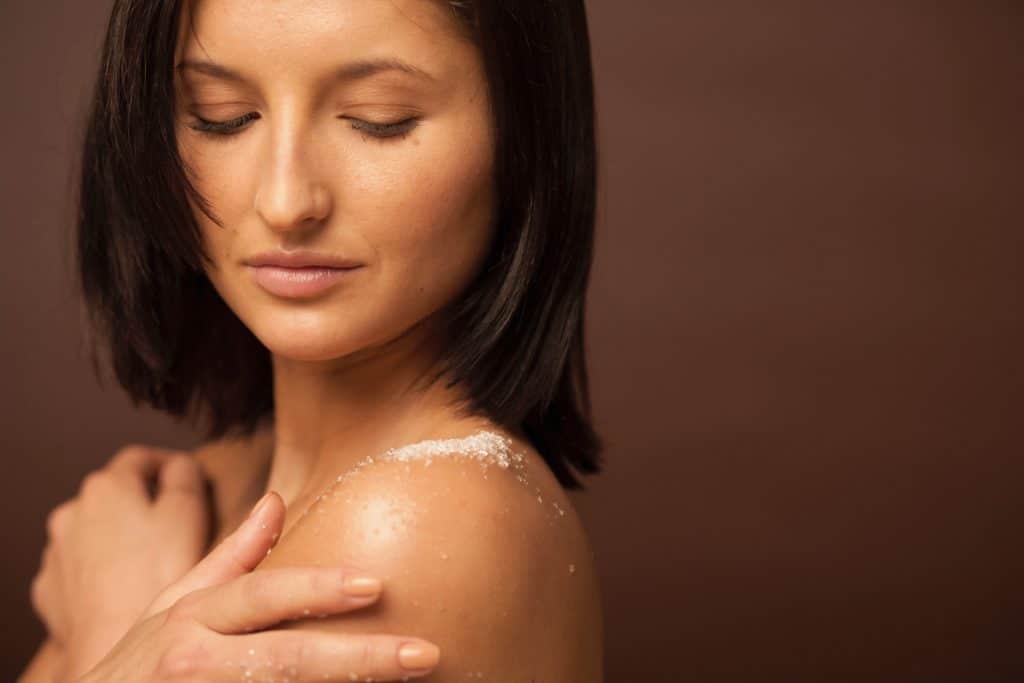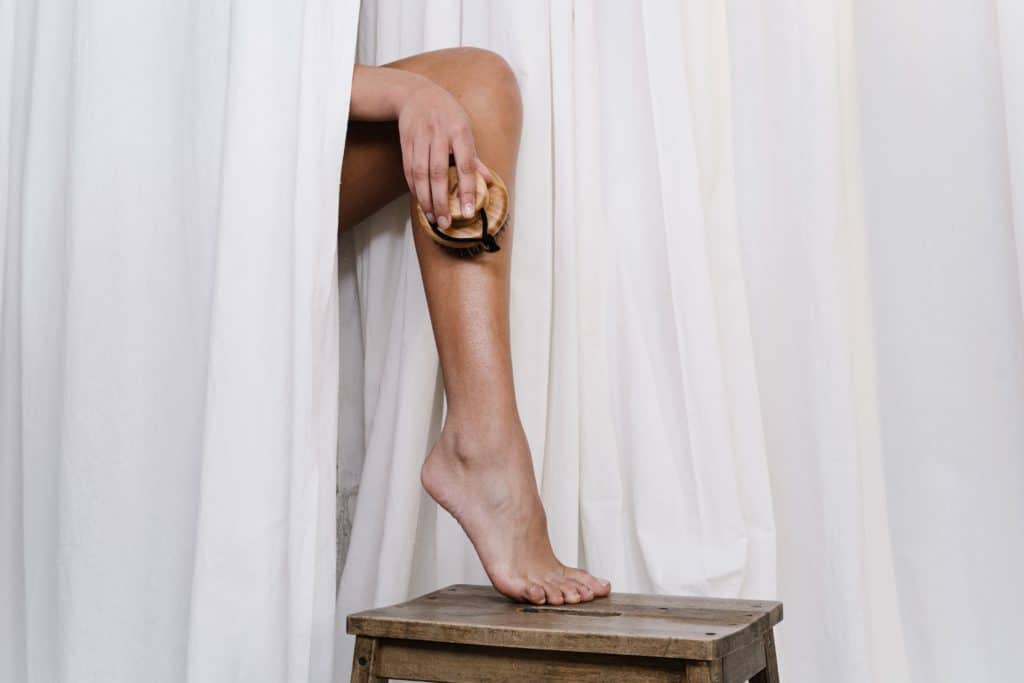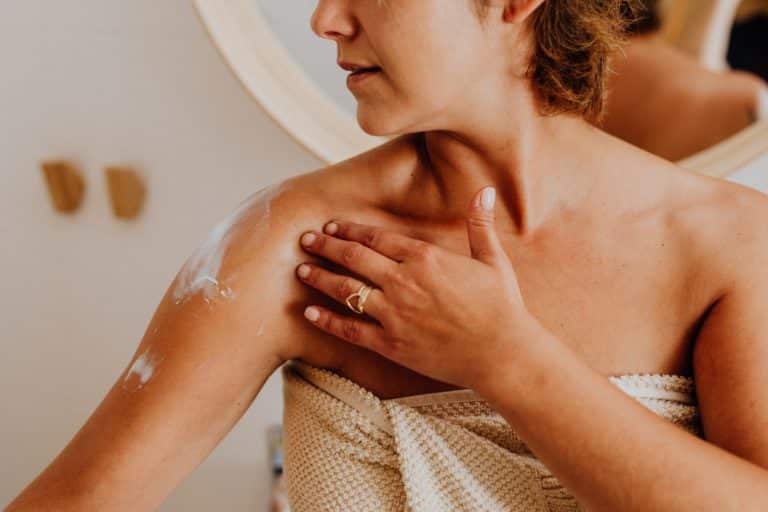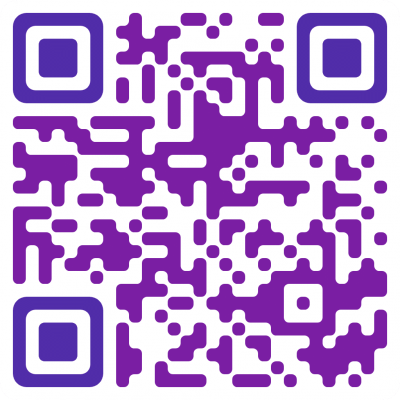
INTRO
What is Dry Brushing?

Dry brushing, also known as body brushing, is a technique where a dry body brush with stiff bristles is used to brush the skin in circular motions before taking a shower or bath, with the goal of exfoliating the skin, improving circulation, detoxifying the body, and reducing stress.
Body brushing is believed to have various benefits, however, it should be done gently, and not recommended for people with sensitive skin or certain skin conditions. Invite a friend to join your dry brushing challenge for detox!
If you don’t already have one, we really like this body brush.
Health Benefits of Dry Brushing
Exfoliating the skin
Dry brushing helps to remove dead skin cells, which can leave the skin feeling smoother and softer.
Improving circulation
Dry brushing stimulates blood flow and lymphatic drainage, which can help to reduce the appearance of cellulite and improve overall skin tone.
Detoxifying the body
Dry brushing is believed to help the body to release toxins through the skin, which can help to improve overall health and well-being.

Reducing stress
Dry brushing can be a form of self-massage and can help to relieve tension in the body, which can have a calming effect on the mind.
Stimulating the immune system
Dry brushing may help to stimulate the immune system by increasing the number of lymphocytes, white blood cells that help to fight off infections.
How to Dry Brush

Dry brushing is a simple technique, that when practiced once or twice, becomes more automatic.
Brush in circular motions. Dry brushing is typically done in circular motions, starting from the feet and working upward in the direction of the heart. This is done to help stimulate blood flow and lymphatic drainage.
Use a dry brush. The brush should be dry and made of natural bristles, as synthetic bristles may be too harsh on the skin.
Gradually increase pressure. Start with gentle pressure and gradually increase as your skin becomes accustomed to the brushing.
Avoid sensitive areas. Dry brushing should be avoided on sensitive areas such as the face, nipples, and any area with broken skin or varicose veins.
Brush before showering. Dry brushing is typically done before taking a shower or bath to help open up the pores and make it easier to remove dead skin cells.
Moisturize! After dry brushing, it’s important to moisturize the skin to keep it hydrated.
Different Dry Brushing Methods
The most common way to dry brush is to use a dry brush with stiff bristles and to brush the skin in circular motions starting from the feet and working upward in the direction of the heart. However, there are different variations of dry brushing that can be done depending on the individual’s preferences and goals.
Here are some examples:
Full-body dry brushing
Full-body brushing involves brushing the entire body, including the arms, legs, torso, and back.
Targeted dry brushing
This involves focusing on specific areas of the body that may be of concern, such as the thighs, hips, or abdomen.
Wet brushing
Wet brushing involves brushing the skin with a slightly damp body brush, which can be used to create a gentle lather. Wet brushing is typically done to help remove dead skin cells.
Soft-bristle dry brushing
Soft-bristle dry brushing involves using a brush with softer bristles, which can be gentler on the skin and more suitable for people with sensitive skin.

Starting a Dry Brushing Challenge
Starting a dry brushing challenge can be easy and beneficial for your skin and overall health. Here are some steps to help you get started.
1
Purchase a dry brush
Look for a body brush with natural bristles and a long handle for easy reach of all areas of the body.
2
Schedule a time & be consistent
Find a time in your daily routine when you can dry brush before taking a shower or bath. Make dry brushing a regular part of your daily routine to see the best results.
3
Start with light pressure
Begin with gentle, circular motions and gradually increase pressure as your skin becomes accustomed to the brushing.
4
Focus on the areas of concern
If you have specific areas of concern, such as cellulite or dry skin, focus on those areas during your dry brushing sessions.
5
Brush in the direction of the heart
Start at the feet and work upward in the direction of the heart. This will help with lymphatic drainage and circulation.
Overcoming Dry Brushing Setbacks

Dry brushing is a simple and easy technique, however, some people may experience some setbacks or difficulties. Here are some common setbacks you might encounter with your dry brushing challenge and ways to overcome them.
Skin irritation. Some people may experience skin irritation, redness, or soreness after dry brushing. To overcome this, use a soft-bristle brush and brush gently, avoiding sensitive areas. Also, moisturize your skin after dry brushing to soothe it.
Dryness. Dry brushing can leave the skin feeling dry. To overcome this, moisturize your skin after dry brushing to keep it hydrated.
Difficulty reaching certain areas. If you have difficulty reaching certain areas of the body, such as the middle of the back, use a brush with a long handle or ask someone to help you.
Lack of motivation. If you find it difficult to stick to a dry brushing routine due to lack of motivation, try to find a time in your daily routine when you can dry brush, and make it a habit.
Bruising or bleeding. Some people may experience bruising or bleeding, especially if they have varicose veins or other skin conditions. To overcome this, avoid dry brushing on sensitive areas and consult with a healthcare professional if you have any concerns.

Dry Brushing FAQ's
The frequency of dry brushing depends on your skin type and preferences. Some people dry brush daily, while others do it a few times a week. It’s best to start with dry brushing once or twice a week and see how your skin responds before increasing the frequency.
It’s generally recommended to dry brush in the morning before showering or bathing, as it can help energize you and stimulate lymphatic flow throughout the day.
Dry brushing should typically be done for 2-5 minutes on the body, and 1-2 minutes on the face, depending on your skin sensitivity. It’s best to start with a shorter time and gradually increase as your skin becomes accustomed to the practice.
It’s important to be gentle and not press too hard, as the goal is to stimulate circulation and exfoliate the skin, not to cause irritation. It’s also important to brush towards the heart to promote blood flow.
A dry brush should have natural bristles, typically made from boar or horse hair. The bristles should be stiff, but not too stiff, in order to effectively exfoliate the skin. A long handle is also useful for reaching hard-to-reach areas such as the back.
Look for a brush specifically labeled as a “dry brush” to ensure it is appropriate for this purpose.
To clean a dry brush, we recommend that you use a mild soap or shampoo and warm water. Wet the bristles and work in the soap or shampoo, then use your fingers to gently scrub the bristles. Rinse the brush thoroughly under running water until all of the soap or shampoo is removed. Shake off any excess water and lay the brush flat or hanging on a towel to dry completely. It’s important to make sure the brush is completely dry before using it again to prevent bacteria growth.
You may also want to disinfect your brush periodically, especially if you have sensitive skin or are prone to skin irritation. You can do this by soaking the brush in a mixture of equal parts water and white vinegar for 10-15 minutes, then cleaning it as instructed above.
Help With Dry Brushing
There are several technological, product, and community support tools that can help you start a dry brushing habit.
Using Tech. Various smartphone apps can remind you to dry brush and track your progress. Mark it in your calendar each time you body brush!
Products. Look for dry brushes that are specifically designed for dry body brushing, and pay attention to any special cleaning and care instructions that come with the dry brush.
Community support. You can join an online community (like the MasterHealth community) or check out forums and social media groups. Within these online platforms, you can connect with others who are also interested in dry brushing, ask questions, and share tips and advice.










